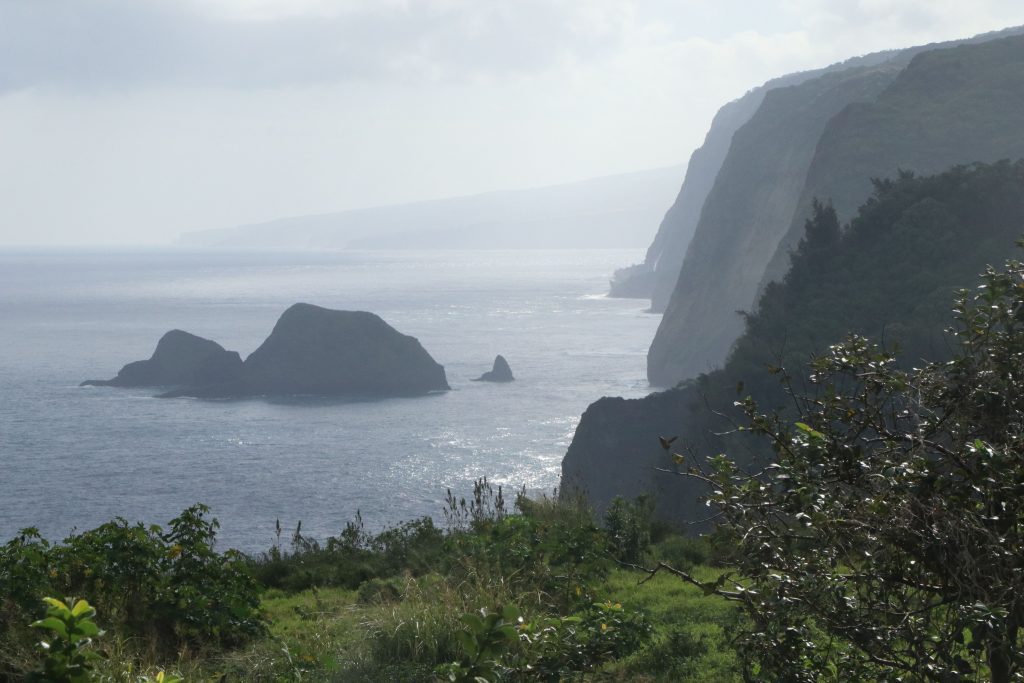“Everyone is recognizing the overuse of Pololū and the community wanting to do something about it,” begins Jackson Bauer.
He’s a specialist with the Na Ala Hele Trails and Access System and the DLNR Division of Forestry and Wildlife’s (DOFAW) point-of-contact with a rural, end-of-the pavement community that has been besieged for years by too many visitors.
“We’ve been meeting with the community, many of whom are lineal descendants of Pololū, so they have deep connections to the area. Brainstorming led to the great idea for having onsite stewardship. That’s the model we always want to follow; empowering communities to lead their own initiatives,” Bauer explained.
One initiative already in place is a community stewardship program. Sara Pule-Fujii, who describes her position as “steward of the land,” was born and raised three-minutes down the road from the tiny parking area, where she now talks story directly with as many visitors as she can.
“I tell them about the burial sites down in the valley and ask them to respect the area and my ancestors. I warn them to not go into the ocean because of strong currents. And I ask them not to stray off the trail or the beach,” Pule-Fujii commented. She also warns them not to travel inland as it’s private property. “Some people like to do their business anywhere. I tell them this land is sacred to the Hawaiian people and we ask that you have respect.”
Bauer said he believes everyone agrees that, unfettered use of any natural area is not sustainable and never appropriate for sensitive heritage sites like Pololū. “You would never have a five-thousand-person concert at Iolani Palace, so why would we have thousands of people here every day?” he asked.
The State Legislature appropriated $500,000 in Capital Improvement Funding (CIP) to kickstart a planning process for Pololū Valley. The trail, a small parking area for fewer than 12 cars, and the cliff dropping down to the ocean fall under DOFAW jurisdiction, but DLNR and lawmakers are committed to ensuring whatever plan develops, is one developed and driven by the local community.
Rep. David Tarnas said, “As the State Representative for Kohala, I represent residents of the area surrounding Pololū who experience the impacts of its overuse by visitors every day. I am grateful for the opportunity to support the community’s vision of leadership and stewardship of Pololū, and I encourage everyone in the community to actively participate in this planning process. I look forward to seeing the entire and original intent of protecting Pololū, as an initiative driven by the community, coming to fruition.”
The planning process is focused on community engagement…reaching out to lineal descendants and other stakeholders by way of one-on-one discussions and community-wide meetings. DOFAW is in the process of selecting a consultant to help facilitate the community engagement.
“Pololū was never meant to be a visitor attraction. It has no infrastructure and just happens to be at the end of the road and is very scenic,” Bauer said. “The community-stewardship initiative is already showing evidence of success as more engagement with visitors means they’ll understand and hopefully respect the place in a more meaningful way. This program was and is community-driven, and we’re eager to see what they come up with next.”
Community-Driven Effort to Protect Pololū Valley Moving Forward

